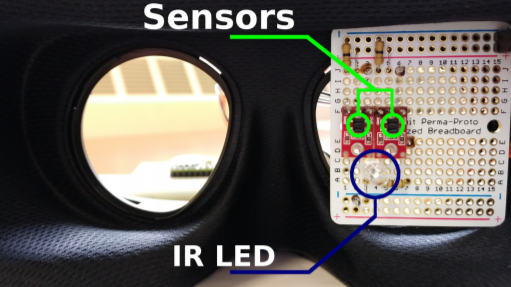Developing photo-sensor oculography (PS-OG) system for virtual reality headsets
PubDate: June 2018
Teams: Michigan State University
Writers: Raimondas Zemblys;Oleg Komogortsev
PDF: Developing photo-sensor oculography (PS-OG) system for virtual reality headsets

Abstract
Virtual reality (VR) is employed in a variety of different applications. It is our belief that eye-tracking is going to be a part of the majority of VR devices that will reduce computational burden via a technique called foveated rendering and will increase the immersion of the VR environment. A promising technique to achieve low energy, fast, and accurate eye-tracking is photo-sensor oculography (PS-OG). PS-OG technology enables tracking a user’s gaze location at very fast rates - 1000Hz or more, and is expected to consume several orders of magnitude less power compared to a traditional video-oculography approach. In this demo we present a prototype of a PS-OG system that we started to develop. The long-term aim of our project is to develop a PS-OG system that is robust to sensor shifts. As a first step we have built a prototype that allows us to test different sensors and their configurations, as well as record and analyze eye-movement data.

